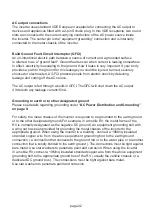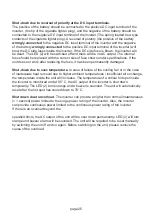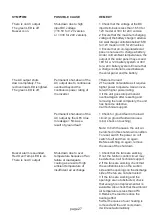
The inverter will require Deep Cycle Lead Acid Batteries of appropriate capacity. Lead-acid
batteries can be categorized by the type of application: automotive service- Starting /
Lighting / Ignition (SLI, a.k.a. cranking) and deep cycle service.
SLI Batteries
Everybody is familiar with the SLI batteries that are used for automotive starting and
powering vehicular accessories SLI batteries are designed to produce high power
in short bursts but must be constantly recharged (normally with an alternator while driving).
Vehicle starting typically discharges 1%-3% ofa healthy SLI battery’s capacity.
The automotive SLI battery is not designed for repeated deep disacharge where up to 80%
of the battery capacity is discharged and then recharged. If an SLI battery is used for this
type of application, its use ful service life will be drastically reduced.
Deep Cycle Batteries
Deep Cycle Batteries are designed with thick-plate electrodes to serve as primary power
sources, to have a constant discharge rate, to have the capability to be deeply discharged
up to 80% capacity and to repeatedly accept recharging. They are marketed for use in
recreation vehicles (RV), boats and electric golf carts- so they may be referred to as RV
batteries, marine batteries or golf cart batteries. There are two categories of deep cycle
lead acid batteries- wet and sealed. A wet cell battery has a high tolerance to overcharging.
However, it will release hydrogen gas when charging that must be properly vented and
the waterlevel must be checked frequently. Sealed batteries can either be Gel Cell or AGM
(
A
bsorbed
G
lass
M
at). Both the Gel Cell and AGM are maintenance free, have no liquid
to spill and gassing is minimal. The Gel Cell is the least affected by temperature extremes
storage at low state of charge and has a low rate of discharge. An AGM battery will handle
overcharging slightly better than the Gel Cell.
Units of Battery capacity
The battery capacity is the measure of the energy the battery can store and deliver to a
load. It is determined by how much current any given battery can deliver over a stipulated
period of time. The energy rating is expressed in
A
mpere
H
ours(AH). As a bench mark,
the battery industry rates batteries at 20 hour rate i.e. how many Amperes of current the
battery can deliver for 20 hours at 25C° till the voltage drops to 10.5 Volts for 12 V battery
and 21 V for 24 V battery. For example, a 100 AH battery will deliver 5 Amperes for
20 hours. Battery capacity is also expressed as
Reserve Capacity (RC)
in minutes.
Reserve capacity is the time in minutes for which the battery can deliver 25 Amperes at
25C° till the voltage drops to 10.5 Volts for 12 V battery and 21 V for 24 V battery.
Approximate relationship between the two units is as follows:
Capacity in AH = Reserve
Capacity in RC minutes x 0.6.
SPECIFYING BATTERIES, CHARGERS & ALTERNATORS
page 13
Содержание PST-100S-12E
Страница 33: ...www samlex com www samlex solar com...















































